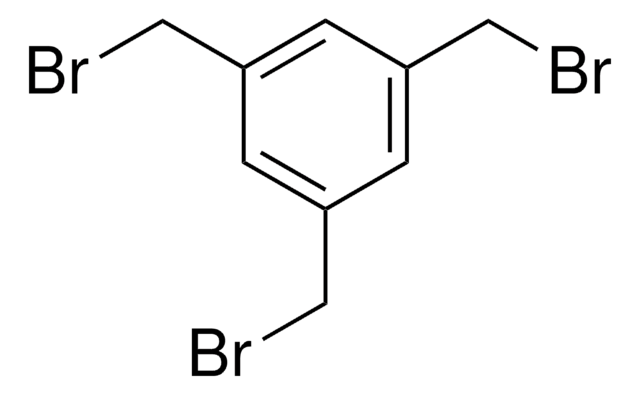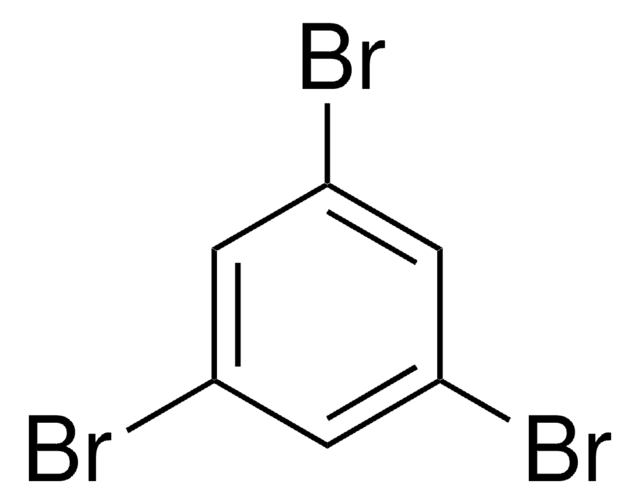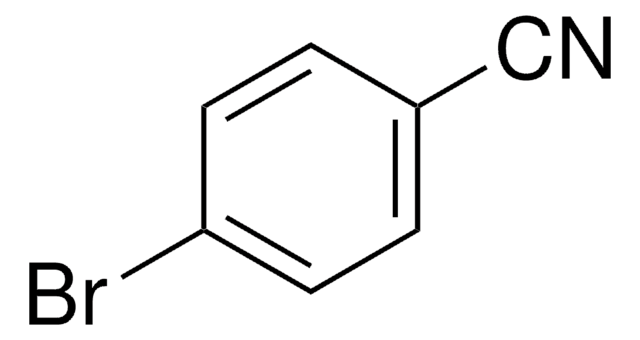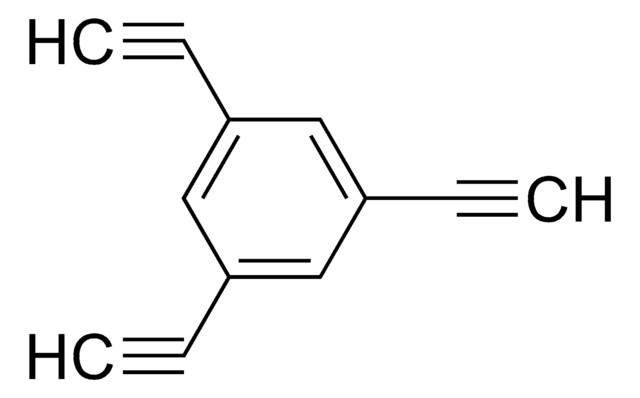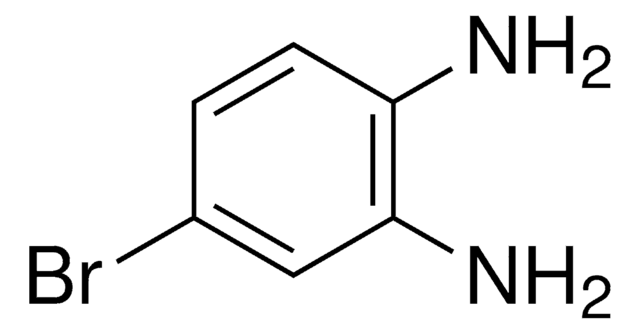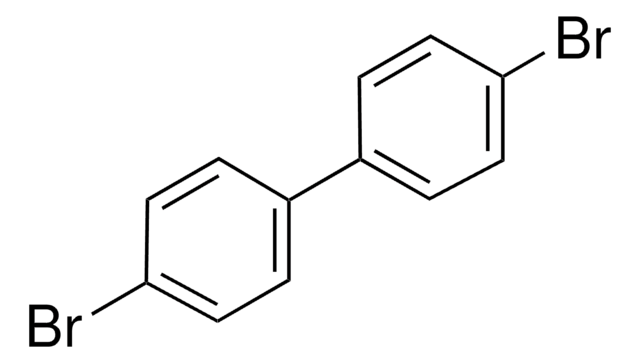648906
1,3,5-Tris-(4-bromphenyl)-benzol
97%
Anmeldenzur Ansicht organisationsspezifischer und vertraglich vereinbarter Preise
Alle Fotos(1)
About This Item
Empirische Formel (Hill-System):
C24H15Br3
CAS-Nummer:
Molekulargewicht:
543.09
MDL-Nummer:
UNSPSC-Code:
12352103
PubChem Substanz-ID:
NACRES:
NA.23
Empfohlene Produkte
Assay
97%
Form
solid
mp (Schmelzpunkt)
261-265 °C
SMILES String
Brc1ccc(cc1)-c2cc(cc(c2)-c3ccc(Br)cc3)-c4ccc(Br)cc4
InChI
1S/C24H15Br3/c25-22-7-1-16(2-8-22)19-13-20(17-3-9-23(26)10-4-17)15-21(14-19)18-5-11-24(27)12-6-18/h1-15H
InChIKey
HJQRITCAXSBOPC-UHFFFAOYSA-N
Allgemeine Beschreibung
1,3,5-Tris(4-bromophenyl)benzene (TBB) is a halogenated aromatic monomer that can be used in the formation of covalent aromatic frameworks(COF).
Anwendung
TBB can be used to synthesize porous aromatic frameworks for the development of adsorption membranes to treat organic pollutants. It can also be used in the fabrication of pyridine based high efficiency organic light emitting diodes(OLEDs).
Signalwort
Danger
H-Sätze
P-Sätze
Gefahreneinstufungen
Aquatic Chronic 4 - Eye Dam. 1
Lagerklassenschlüssel
11 - Combustible Solids
WGK
WGK 3
Flammpunkt (°F)
Not applicable
Flammpunkt (°C)
Not applicable
Persönliche Schutzausrüstung
dust mask type N95 (US), Eyeshields, Gloves
Hier finden Sie alle aktuellen Versionen:
Besitzen Sie dieses Produkt bereits?
In der Dokumentenbibliothek finden Sie die Dokumentation zu den Produkten, die Sie kürzlich erworben haben.
Kunden haben sich ebenfalls angesehen
Surface mediated synthesis of 2D covalent organic frameworks: 1, 3, 5-tris (4-bromophenyl) benzene on graphite (001), Cu (111), and Ag (110)
Gutzler R, et al.
Chemical Communications (Cambridge, England), 4456-4458 (2009)
Star-shaped oligothiophenes for solution-processible organic electronics: flexible aliphatic spacers approach
Ponomarenko SA, et al.
Chemistry of Materials, 18(17), 4101-4108 (2006)
Pyridine-containing triphenylbenzene derivatives with high electron mobility for highly efficient phosphorescent OLEDs
Su, Shi-Jian; Chiba, Takayuki; et al.
Advanced Materials, 20(11), 2125-2130 (2008)
Synthesis of a porous aromatic framework for adsorbing organic pollutants application
Ren H, et al.
Journal of Materials Chemistry, 21(28), 10348-10353 (2011)
Ruiyan Sun et al.
ChemSusChem, 12(14), 3278-3285 (2019-04-30)
Methyl formate was produced in one pot through the hydrogenation of CO2 to formic acid/formate followed by an esterification step. The route offers the possibility to integrate renewable energy into the fossil-based chemical value chain. In this work, a phosphine-polymer-anchored
Unser Team von Wissenschaftlern verfügt über Erfahrung in allen Forschungsbereichen einschließlich Life Science, Materialwissenschaften, chemischer Synthese, Chromatographie, Analytik und vielen mehr..
Setzen Sie sich mit dem technischen Dienst in Verbindung.